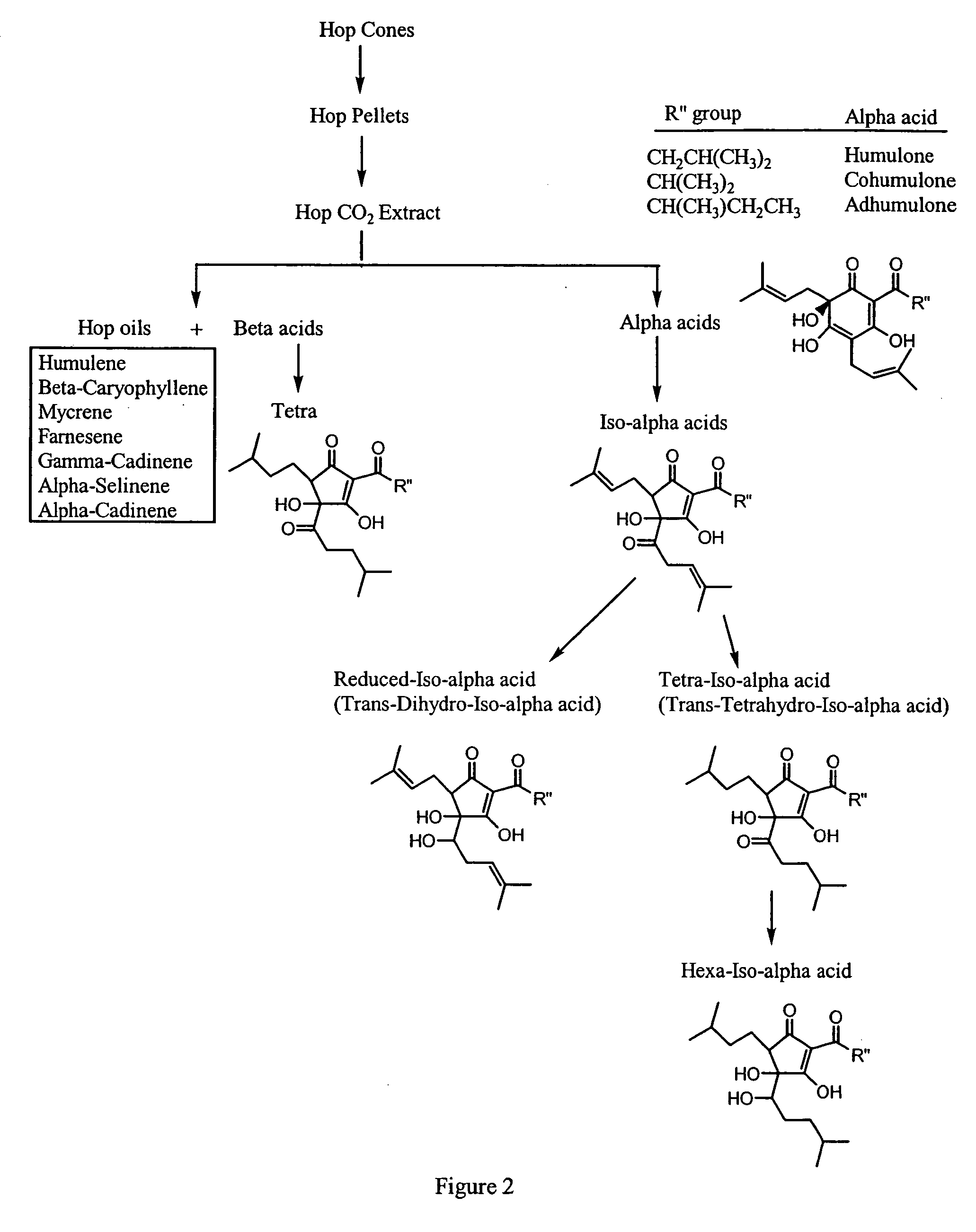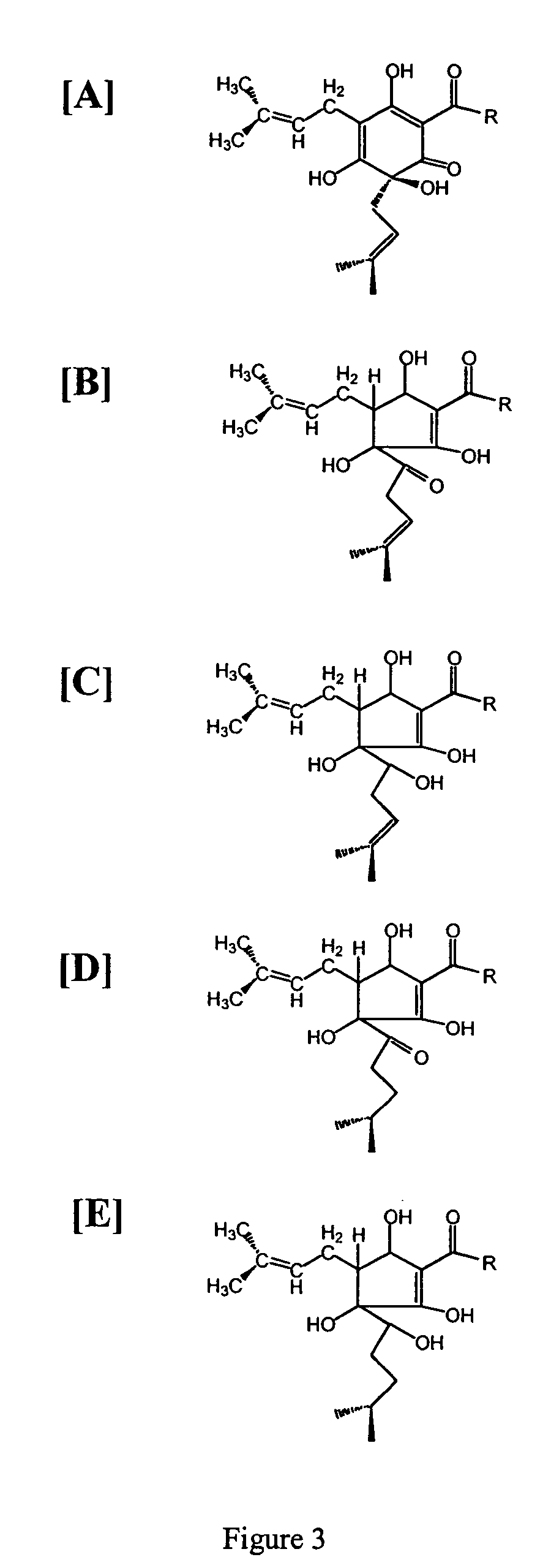Synergistic compositions that treat or inhibit pathological conditions associated with inflammatory response
a technology of inflammatory response and composition, applied in the field of synergistic compositions, can solve the problems of untoward gastric toxicity of inflammatory drugs such as celexocib and rofecoxib, and achieve the effects of reducing the symptoms of osteoarthritis, normalizing joint movement, and increasing the rate of glucosamin
- Summary
- Abstract
- Description
- Claims
- Application Information
AI Technical Summary
Benefits of technology
Problems solved by technology
Method used
Image
Examples
example 1
AGS Gastric Mucosal Cells Constitutively Express Both Cyclooxygenase-1 and Cyclooxygenase-2
[0128] Summary
[0129] This example demonstrates that the AGS human gastric mucosal cell line, possessing constitutive expression of COX-1 and COX-2, has excellent potential to serve as a model for assessing the gastrointestinal toxicity of cyclooxygenase-inhibiting compounds.
[0130] Equipment used in this example included: an OHAS Model #E01140 analytical balance, a Forma Model #F1214 biosafety cabinet (Marietta, Ohio), various pipettes to deliver 0.1 to 100 μL (VWR, Rochester, N.Y.), a cell hand tally counter (VWR Catalog #23609-102, Rochester, N.Y.), a Forma Model #F3210 CO2 incubator (Marietta, Ohio), a hemacytometer (Hausser Model #1492, Horsham, Pa.), a Leica Model #DM IL inverted microscope (Wetzlar, Germany), a PURELAB Plus Water Polishing System (U.S. Filter, Lowell, Mass.), a 4° C. refrigerator (Forma Model #F3775, Marietta, Ohio), a vortex mixer (VWR Catalog #33994-306, Rochester, N...
example 2
Inhibition of PGE2 Synthesis in Gastric Mucosal Cells by Nonsteroidal Anti-Inflammatory Drugs
[0142] Summary
[0143] This example illustrates that inhibition of PGE2 synthesis in AGS gastric cells by NSAIDs correlates with their observed clinical gastric irritation.
[0144] Chemicals
[0145] Rofecoxib and celexocib were obtained. Diisofluorophosphate (DIFP), nimensulide, ibuprofen, salicylic acid, aspirin, indomethacin and acetaminophen were purchased from Sigrna (St. Louis, Mo.). All other chemicals were obtained from suppliers as described in Example 1.
[0146] Cells
[0147] A549 (human pulmonary epithelial) and AGS cells (human gastric mucosa) were obtained from the American Type Culture Collection (Nanassas, VA) and sub-cultured according to the instructions of the supplier. The cells were routinely cultured at 37° C. with 5% CO2 in RPMI 1640 containing 10% FBS, with 50 units penicillin / mL, 50 μg streptomycin / mL, 5% sodium pyruvate, and 5% L-glutamine. On the day of the experiments, ...
example 3
Inhibition of PGE2 Synthesis in Stimulated and Nonstimulated Murine Macrophages by Hops (Humulus lupulus) Compounds and Derviatives
[0160] Summary
[0161] This example illustrates the potency of hops fractions and derivatives to inhibit COX-2 synthesis of PGE2 preferentially over COX-1 synthesis of PGE2 in the murine macrophage model.
[0162] Chemicals and reagents
[0163] Bacterial lipopolysaccharide (LPS; B E. coli 055:B5) was from Sigma (St. Louis, Mo.). Hops fractions (1) alpha hop (1% alpha acids; AA), (2) aromahop OE (10% beta acids and 2% isomerized alpha acids , (3) isohop (isomerized alpha acids; IAA), (4) beta acid solution (beta acids BA), (5) hexahop gold (hexahydro isomerized alpha acids; HHIAA), (6) redihop (reduced isomerized-alpha acids; RIAA), (7) tetrahop (tetrahydro-iso-alpha acids THIAA) and (8) spent hops were obtained from Betatech Hops Products (Washington, D.C., U.S.A.). The spent hops were extracted two times with equal volumes of absolute ethanol. The ethanol w...
PUM
| Property | Measurement | Unit |
|---|---|---|
| concentration | aaaaa | aaaaa |
| concentration | aaaaa | aaaaa |
| pressure | aaaaa | aaaaa |
Abstract
Description
Claims
Application Information
 Login to View More
Login to View More - R&D
- Intellectual Property
- Life Sciences
- Materials
- Tech Scout
- Unparalleled Data Quality
- Higher Quality Content
- 60% Fewer Hallucinations
Browse by: Latest US Patents, China's latest patents, Technical Efficacy Thesaurus, Application Domain, Technology Topic, Popular Technical Reports.
© 2025 PatSnap. All rights reserved.Legal|Privacy policy|Modern Slavery Act Transparency Statement|Sitemap|About US| Contact US: help@patsnap.com



